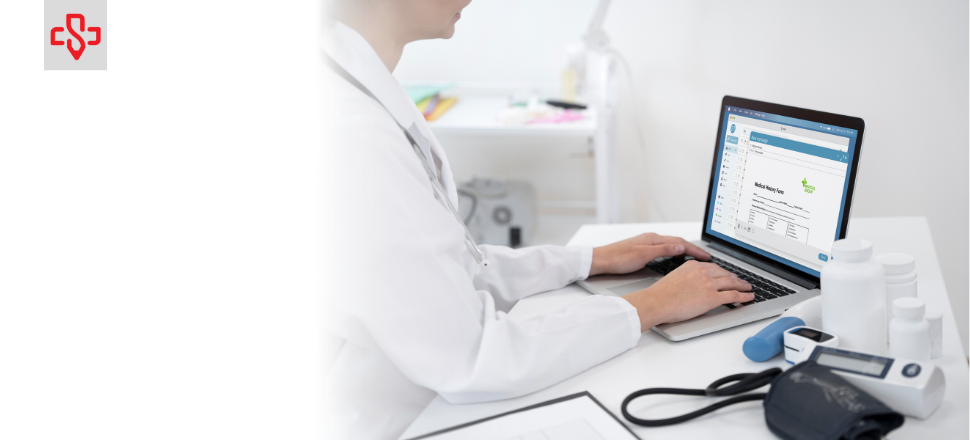In the current U.S. healthcare landscape, doctors are increasingly bogged down by EHR documentation, impacting patient care. Enter the medical scribe—a vital ally who handles real-time charting so clinicians can focus on their patients.
If you’re curious about what a medical scribe does, how to become one, or whether your healthcare organization needs one, this guide is for you.
1. What Is a Medical Scribe?
A medical scribe is an unlicensed paraprofessional trained to chart physician–patient interactions in real time within an Electronic Health Record (EHR) system. At the direction of a provider, scribes document:
- Patient history and review of systems
- Physical exam details
- Differential diagnosis and treatment plans
- Orders, medications, and follow ups
- Billing codes (where applicable)
Scribes may work onsite in clinics, hospitals, and emergency departments, or remotely as virtual scribe via secure HIPAA-compliant tele-scribing platforms.
2. Why Medical Scribes Matter
Efficiency & Productivity
Randomized trials show that scribes increase chart completion rates within 48 hours (OR ≈1.18, P = .028) and significantly boost physician satisfaction (ORs up to 86 for charting time improvement). Studies in hospitalist settings report up to 37% more admission encounters and a 322% ROI within six weeks.
Reduced Burnout & Better Workflow
Evidence suggests scribes ease documentation burden and significantly reduce physician stress while improving job satisfaction and multitasking ability.
Unaffected Patient Satisfaction
Patient satisfaction remains stable with scribes present, while chart accuracy and provider face and time both improve.
Revenue & Throughput Gains
Clinics report increases in patient throughput and billing efficiency, particularly in busy emergency departments and primary care settings.
3. Core Responsibilities of a Medical Scribe
- Shadowing providers during patient encounters
- Real-time EHR data entry: subjective, objective, assessment, plan (SOAP notes)
- Handling lab/imaging orders, vital signs, medications
- Retrieving medical records and tracking results
- Assisting with discharge summaries and referrals
- Maintaining professional discretion and respect for PHI
4. Typical Settings & Workflow
Work Settings:
- Emergency Departments (ED scribes), hospitalist rounds, outpatient clinics, specialty practices (e.g., cardiology, orthopedics), telemedicine settings.
Tools:
- Onsite scribes use hospital EHRs (Cerner, Epic, etc.);
- Remote scribes connect via encrypted platforms that comply with HIPAA standards.
In both environments, the goal remains the same: improve documentation quality, clinician presence, and workflow efficiency.
5. Who Becomes a Medical Scribe?
Common candidates include:
- Pre-med, pre-PA, and pre-NP undergraduate students
- Gap-year students seeking clinical exposure
- Career changers entering healthcare
- Clinically inclined professionals pursuing certification or specialization
6. Skills & Training Needed
Essential Skills:
- Fast, accurate typing
- Medical terminology, anatomy, SOAP formatting
- EHR familiarity and HIPAA compliance
- Professional teamwork, judgment, and confidentiality
- Minimum qualifications – High school diploma/GED, training in medical terminology and HIPAA; many employers prefer college-level or healthcare-bound candidates.
Training Paths:
- In-house clinical programs (Scribe.ology-style training)
- Third-party coursework with assessments
- Optional certifications via the American College of Medical Scribe Specialists (ACMSS)
7. Career Benefits: For Providers & Students
For Healthcare Providers & Organizations:
- Shorter charting time and faster note closure
- Increased patient volume and visit capacity
- Reduced provider burnout with better documentation accuracy
- Favorable ROI—with some studies demonstrating substantial gains in productivity
For Aspiring Medical Professionals:
- Early clinical exposure and mentorship from physicians
- Mastery of documentation and healthcare workflows
- Strong resume builder, recommendation opportunities, and med school readiness
8. The Future: AI & Hybrid Scribe Models
While human scribes still lead in reliability and adaptability, AI-powered “scribes” are rapidly emerging:
- Investment in AI medical note-taking tools doubled in 2024 (~$800M).
- Early results show up to 40% burnout reduction in pilot programs, though efficiency and ROI are still inconclusive.
- AI scribes often mis-transcribe or hallucinate clinical details—clinician oversight remains essential.
9. Getting Started with Scribe.ology
Scribe.ology provides aspiring medical scribes with the tools and training to succeed in clinical settings. Gain valuable experience while supporting physicians in delivering quality patient care.
Why Scribe.ology?
- Comprehensive medical scribe training programs
- HIPAA-compliant onsite and virtual scribing solutions
- Flexible staffing models to meet clinic and hospital needs
- A commitment to accuracy, reliability, and provider support
To Join as a Scribe
- Apply via our job portal
- Complete coursework in medical documentation and HIPAA
- Begin paired mentoring with onsite or remote providers
- Optionally pursue ACMSS certification
To Hire a Scribe Team
- Contact us to assess your clinic’s workflow needs
- Review implementation plans and staffing models
- Onboard tailored to your EHR and scheduling system
- Monitor ROI and clinical satisfaction metrics
Conclusion
The role of a medical scribe has evolved into a cornerstone of modern healthcare delivery—boosting provider efficiency, reducing burnout, and enhancing patient engagement. Whether you’re a healthcare organization looking to streamline your workflows or a future clinician seeking invaluable experience, the impact of a well-trained scribe is undeniable.
As the healthcare industry grows more complex—and documentation demands continue to rise—the need for real-time, accurate, and compliant charting becomes even more critical. That’s where professional medical scribing services like Scribe.ology come in.
By partnering with a trusted scribe provider or pursuing a scribe role yourself, you’re taking a proactive step toward better care, smoother operations, and a smarter future in medicine.





